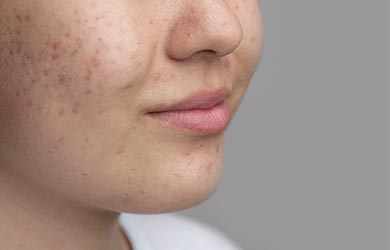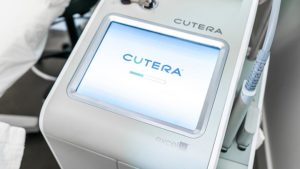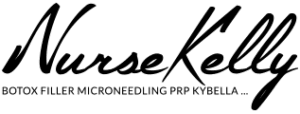
Conveniently located on Seven Mile Beach, Grand Cayman
UNDERSTANDING SCARRING

Scarring occurs as a natural part of the skin’s healing process in response to injury, trauma, or inflammation. When the skin is damaged, the body initiates a complex series of biological processes to repair the injured area, leading to the formation of scar tissue. This tissue is composed of collagen fibers that are arranged differently from those in normal skin, resulting in a different texture and appearance. While scars help to close wounds and protect underlying tissues, they can also cause significant cosmetic concerns, particularly if they are large, raised, or discolored. In addition, scars may restrict movement, cause discomfort, or affect self-esteem and mental well-being. In some cases, scars may also be associated with health concerns, such as keloids or hypertrophic scars, which can continue to grow and become increasingly thickened and raised over time.
CAUSES OF SCARRING
The causes of scarring can vary widely and may include:
- Foreign objects: Foreign objects embedded in the skin, such as glass or metal fragments, can cause scarring as the body attempts to heal around the object.
- Genetics: Some individuals may be genetically predisposed to developing certain types of scars, such as keloids or hypertrophic scars, which result from an overproduction of collagen during the healing process.
- Inflammatory skin conditions: Conditions such as acne, eczema, psoriasis, and infections can cause inflammation in the skin, increasing the likelihood of scarring.
- Injury or trauma: Accidents, cuts, burns, surgical incisions, and other forms of physical trauma to the skin can lead to scarring.
- Piercings and tattoos: Improperly performed piercings or tattoos, as well as complications during the healing process, can lead to scarring.
- Radiation therapy: Cancer treatments such as radiation therapy can lead to scarring in the treated area.
- Skin conditions: Certain skin conditions, such as chickenpox, impetigo, and herpes, can result in scarring if lesions are scratched or not properly treated.
- Surgery: Surgical procedures, whether elective or necessary for medical reasons, can result in scarring at the site of incisions or wound closures.
Understanding the various causes of scarring is important for implementing preventive measures and appropriate treatment strategies to minimize the extent and impact of scars on an individual’s skin health and overall well-being. Nurse Kelly emphasizes the importance of identifying and addressing underlying factors that contribute to scarring during her consultations with patients.
RISK FACTORS FOR SCARRING
The causes of scarring can vary widely and may include:
- Injury or trauma
- Inflammatory skin conditions
- Surgery
- Piercings and tattoos
- Certain skin conditions, such as chickenpox, impetigo, and herpes
- Genetics
- Radiation therapy
TREATMENT OPTIONS
Nurse Kelly offers the following treatments to address different types of scarring:
Exosomes
Exosomes are extracellular vesicles derived from stem cells that contain growth factors, cytokines, and other signaling molecules. When applied to the skin, exosomes can stimulate cellular regeneration and modulate the inflammatory response, promoting wound healing and reducing scar formation.
Genesis Skin Treatment
Genesis skin treatment utilizes non-invasive laser technology to target the deeper layers of the skin. The laser energy heats the target area, stimulating collagen production and tightening the skin from within. By promoting collagen remodeling, the treatment improves skin elasticity, reduces fine lines and wrinkles, and enhances overall skin firmness and tightness.
Mesotherapy
Mesotherapy treatment with Pluryal involves the injection of a customized cocktail of vitamins, minerals, antioxidants, and other nutrients directly into the skin. This treatment can help improve skin hydration, stimulate collagen production, and promote cellular turnover, leading to smoother and more even-toned skin with reduced scar visibility.
Microneedling
Microneedling, also known as collagen induction therapy, involves creating micro-injuries in the skin using a device with fine needles called Dermapen. This process stimulates the body’s natural healing response, triggering collagen production and promoting skin regeneration. Microneedling can help improve the texture and appearance of scars by promoting tissue remodeling and reducing scar depth.
Platelet Rich Plasma (PRP) Therapy
PRP therapy involves extracting platelets from the patient’s blood and injecting them into the skin. Platelets contain growth factors that can stimulate tissue repair and regeneration, promoting collagen production and accelerating the healing process. PRP therapy can help improve the appearance of scars by promoting skin rejuvenation and reducing scar visibility.
PERSONALIZED MEDICAL ASSESSMENTS AND TREATMENT PLANS

Nurse Kelly employs a meticulous approach to create personalized medical assessments and treatment plans for scarring. During the initial assessment, Nurse Kelly conducts a comprehensive evaluation of the patient’s medical history, skin type, scar characteristics, and any underlying conditions that may influence scar formation. By understanding the unique factors contributing to the development of scars, Nurse Kelly can tailor treatment recommendations to address the specific needs and concerns of each patient. This personalized approach may involve a combination of therapeutic modalities, such as laser therapy, topical treatments, injectable therapies, and skincare regimens, aimed at minimizing scar visibility, promoting tissue remodeling, and improving overall skin health. Throughout the treatment process, Nurse Kelly provides ongoing support, education, and monitoring to ensure that patients receive optimal care and achieve the best possible outcomes in scar management.
LINKS TO TREATMENT OPTIONS

EXOSOMES |
Exosomes are extracellular vesicles derived from stem cells that are used in aesthetic injections for their regenerative properties. |

GENESIS SKIN TREATMENTS |
Genesis skin treatment is a laser therapy that improves skin tone and reduces signs of aging through collagen stimulation. |

MESOTHERAPY |
Mesotherapy revitalizes the skin, promoting hydration, firmness, and a radiant complexion. |

MICRONEEDLING |
Microneedling stimulates growth of collagen, leaving you with youthful-looking skin! |

PRP |
PRP is a concentrated solution of platelets derived from the patient’s own blood, used for regenerative purposes in aesthetic injections. |
TREATMENT OPTIONS FOR ACNE & BLEMISHES
CHEMICAL PEELS
They are a chemical solution applied to the skin which causes controlled damage to the top skin layers. Chemical peels, such as ZO Peel, stimulate the body’s natural healing process – new skin cells form in the treated area and the old and dead skin cells slough off. This prompts the skin to exfoliate and peel off. Depending on the skin condition, the chemical solution to be used can vary – alpha hydroxy acids (AHAs), beta hydroxy acids (BHAs), or trichloroacetic acid (TCA). These acids can help address acne as well as blemishes by stimulating collagen production, unclogging skin pores, reducing inflammation, and dissolving dead skin cells in the treated area.
GENESIS SKIN TREATMENT
Genesis skin, treatment utilizes non-invasive laser technology, specifically the Nd:YAG laser. With this state-of-the-art treatment, it can target the deeper skin layers without causing damage to the surrounding tissue. The laser energy heats different skin layers in a controlled manner, which in turn stimulates collagen production. With increased collagen, enlarged pores shrink and skin inflammation is reduced. Moreover, the laser energy may also target blood vessels to reduce redness associated with acne.
MESOTHERAPY
Mesotherapy treatment with Pluryal, involves the injection of a customized cocktail of vitamins, minerals, amino acids, and other therapeutic ingredients directly into the middle layer of the skin known as the mesoderm. These ingredients stimulate collagen production and promote skin healing. Over time, the appearance and health of the skin is improved.
MICRODERMABRASION
Microdermabrasion with Dermasweep, makes use of a handheld device with a diamond-tipped or crystal-tipped abrasive surface to gently exfoliate the skin. During the treatment, the device is moved across the target area. This process helps to unclog pores and promote cell turnover (formation of new skin cells). As a result, the appearance of visible skin concerns are reduced. In addition, the treatment can also enhance the penetration of skincare products – this means better absorption of substances or ingredients which leads to increased efficacy.
MICRONEEDLING
Microneedling treatment uses Dermapen, a device with fine needles, to create controlled micro-injuries (very tiny wounds) on the skin’s surface. As a result, the body responds by activating the natural wound healing process (skin regeneration and remodeling). In addition, collagen production is increased and new, healthy skin cells form in the treated area. This process significantly reduces acne and blemishes and improves overall skin health.
ZO FACIAL TREATMENTS
ZO facial treatments, utilize a combination of advanced skincare techniques and medical-grade products. These treatments typically involve a series of steps, including cleansing, exfoliation, extraction (if necessary), and application of targeted serums or masks. This combination unclogs skin pores, reduces inflammation, and promotes skin renewal (new, healthy skin cells form in the treated area).
Fast Facts
Who’s it for?
Coolsculpting is indicated for patients with stubborn fat, cellulite, and double chin.
Similar products:
CoolTech, Clatuu.
Celebs who swear by it:
Jennifer Aniston, Kris Jenner, Mariah Carey and Kim Kardashian
Question & Answer
Are there discomforts associated with Coolsculpting?
During the procedure, you may feel sensations of deep pulling, tugging, and pinching as the applicator passes over the treated area. You may also experience cramping, stinging, or tingling sensations. As the freezing applicator delivers controlled cooling, the treated area will temporarily become numb, thus reducing any discomfort.
Will the fat come back after Coolsculpting?
The treatment permanently eliminates the fat cells in the treated area. However, you will still need to maintain a healthy weight after the treatment because significant weight gain can compromise your results.
How long does it take to see Coolsculpting results?
You may begin to notice the results 1 to 3 months after the treatment. However, you will need to wait 4 months to see the final results.
How many Coolsculpting treatments will I need?
The treatment permanently destroys approximately 25% of the exposed fat cells in the treated area but this is enough to produce significant body contouring improvement. While you may benefit from one treatment, you may need two treatment sessions to achieve the best results. The number of treatments you will need will depend on the amount of fat in the target area.
Are there any side effects associated with Coolsculpting?
After the treatment, you may experience mild discomforts such as redness, bruising, numbness, or swelling. You may apply ice packs to the treated area to minimize any discomfort. After 1 to 2 weeks, these discomforts should resolve completely.
Will I lose weight with Coolsculpting?
It is important to keep in mind that the treatment is not a weight loss solution. While Coolsculpting contours the treated area by delivering controlled and precise cooling to the fat cells, you will still need to commit to a healthy lifestyle after the treatment because significant weight gain can compromise your results.
Who are the ideal candidates for Coolsculpting?
The treatment is compatible with all skin types and tones. As long as you are in good overall physical and mental health, the treatment is right for you. However, you are not an ideal candidate for the treatment if you have the following:
- A significant amount of fat in a body area
- Cold agglutinin disease (a red blood cell disorder)
- Cryoglobulinemia (the presence of abnormal proteins in the blood)
- Paroxysmal cold hemoglobulinuria (a rare blood disorder that attacks red blood cells)
- Unrealistic expectations
How much does Coolsculpting cost?
The total cost will depend on the following factors:
- The practitioner’s fee
- The fee of the clinic or medical facility
- The number of treatment sessions required
- The body area needing treatment
The treatment is cosmetic in nature. This means that the cost of the treatment may not be covered by your insurance. Before the procedure, it is best to consult with your health insurance provider for more information.
References
- Oh, C. H., Shim, J. S., Bae, K. I., & Chang, J. H. (2020). Clinical application of cryolipolysis in Asian patients for subcutaneous fat reduction and body contouring. Archives of plastic surgery, 47(1), 62–69. https://doi.org/10.5999/aps.2019.01305. Retrieved from https://www.ncbi.nlm.nih.gov/pmc/articles/PMC6976754/.
- McKeown, D. J., & Payne, J. (2021). Significant improvement in body contour with multiple cycles of CoolSculpting: Results of a prospective study. Dermatologic therapy, 34(2), e14850. https://doi.org/10.1111/dth.14850. Retrieved from https://www.ncbi.nlm.nih.gov/pmc/articles/PMC8047906/.
- Lim, T., Ding, S. W., Chua, C. H., & Moey, H. X. (2021). Enhancing the Appearance of the “Six-Pack” Muscles Using Cryolipolysis: A Safe and Effective Method. Plastic and reconstructive surgery, 148(4), 775–779. https://doi.org/10.1097/PRS.0000000000008320. Retrieved from https://pubmed.ncbi.nlm.nih.gov/34550933/.
- Putra, I. B., Jusuf, N. K., & Dewi, N. K. (2019). Utilisation of Cryolipolysis among Asians: A Review on Efficacy and Safety. Open access Macedonian journal of medical sciences, 7(9), 1548–1554. Retrieved from https://www.ncbi.nlm.nih.gov/pmc/articles/PMC6542401/.
- Few, J., Saltz, R., Beaty, M., Kelly, M., Movassaghi, K., Marcus, K. A., Sieber, D., Burns, A. J., & Sangha, S. (2020). Cryolipolysis: Clinical Best Practices and Other Nonclinical Considerations. Aesthetic surgery journal. Open forum, 2(2), ojaa010. https://doi.org/10.1093/asjof/ojaa010. Retrieved from https://www.ncbi.nlm.nih.gov/pmc/articles/PMC7671251/.
- Naeimi, M. et al. (2019) Treatment by cryolipolysis with radio-frequency and ultrasound cavitation combination is no more effective in improving indices of adiposity than radio-frequency and ultrasound cavitation alone, Translational Metabolic Syndrome Research. Elsevier. Retrieved from https://www.sciencedirect.com/science/article/pii/S2588930318300136.
- Suh, D. H., Park, J. H., Jung, H. K., Lee, S. J., Kim, H. J., & Ryu, H. J. (2018). Cryolipolysis for submental fat reduction in Asians. Journal of cosmetic and laser therapy : official publication of the European Society for Laser Dermatology, 20(1), 24–27. https://doi.org/10.1080/14764172.2017.1368564. Retrieved from https://pubmed.ncbi.nlm.nih.gov/28850270/.
- Rodopoulou, S., Gavala, M. I., & Keramidas, E. (2020). Three-dimensional Cryolipolysis for Submental and Lateral Neck Fat Reduction. Plastic and reconstructive surgery. Global open, 8(4), e2789. https://doi.org/10.1097/GOX.0000000000002789. Retrieved from https://pubmed.ncbi.nlm.nih.gov/32440449/.
- de Gusmão, P. R., Canella, C., de Gusmão, B. R., Filippo, A. A., & Filippo, G. R. (2020). Cryolipolysis for local fat reduction in adults from Brazil: A single-arm intervention study. Journal of cosmetic dermatology, 19(11), 2898–2905. https://doi.org/10.1111/jocd.13389. Retrieved from https://pubmed.ncbi.nlm.nih.gov/32281283/.




 HOW TO LOOK YOUR BEST
HOW TO LOOK YOUR BEST